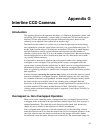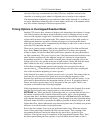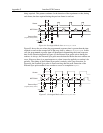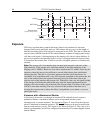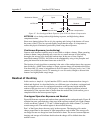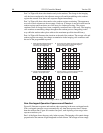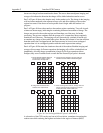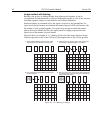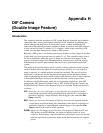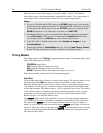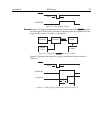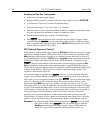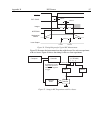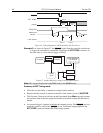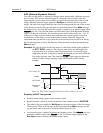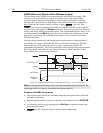
93
Appendix H
DIF Camera
(Double Image Feature)
Introduction
This Appendix describes operation of a DIF system. Both the Controller and a Interline
camera must have factory modifications installed for DIF operation. In addition to the
internal changes and installation of a back panel switch, a camera modified for DIF
operation would ordinarily include a mechanical shutter. Execution of the DIF functions
is done via the WinView/32 software (v2.2 or higher), which, when controlling a DIF
system, provides three timing modes unique to DIF systems.
Basically, a DIF system is one that has been factory modified to allow images to be taken
in pairs with very short exposure times (as small as 1 µs). This capability makes it ideal
for use in experiments where the goal is to obtain two fast successive images for the
purpose of characterizing a time-differentiated laser-strobed process. LIF and velocity
measurements are specific measurements that can be easily performed using the DIF
system.
The ability of the interline chip to quickly transfer an image under the masked columns
and hold it there makes this method of acquiring images possible. As soon as the first
image is acquired, it is shifted under the masked area and held. The second exposure
begins and is continuously held in the photodiode region until the mechanical shutter
closes. Light entering the camera while waiting for the shutter to close is small compared
to that captured during the strobed event and has little effect on the acquired data.
In addition to the FreeRun mode, which allows single image acquisitions, three DIF
timing modes, IEC (Internal Exposure Control), EEC (External Exposure Control) and
ESABI (Electronic Shutter Active Between Images) are provided. Each works basically
as follows.
IEC: Allows two successive fast images of equal duration to be acquired, with the
second image acquisition taking place immediately after the first. Acquisition is
initiated by applying a single externally derived trigger to the controllers Ext.
Sync connector.
EEC: Allows two successive fast images of differing duration to be acquired, with the
second image acquisition taking place immediately after the first. Acquisition is
initiated by applying a single externally derived trigger to the controllers Ext.
Sync connector, the same as in IEC operation.
ESABI: Allows two fast images of equal duration to be acquired. Unlike the IEC and
EEC modes, in the ESABI mode, two pulses are applied to the Ext. Sync
connector. Each initiates a separate acquisition, allowing the you to set the time
between acquisitions by externally adjusting the time between the two applied
pulses.



